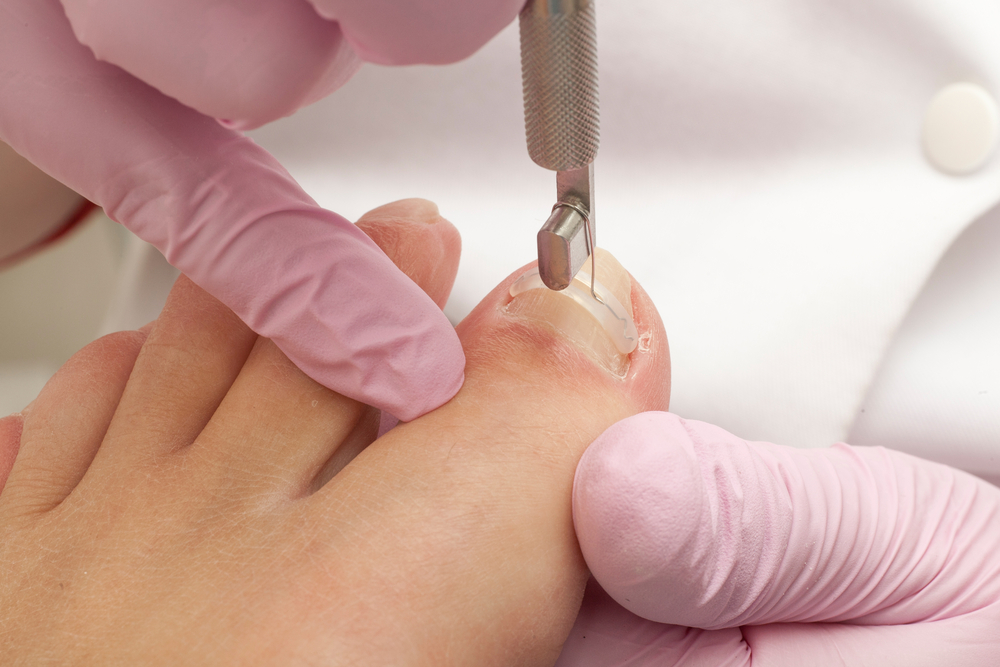If you've been suffering from a fungal nail infection, you're probably wondering whether there's a cure. You may be considering home remedies, oral antifungal medications, or even surgical removal of the infection. The best way to determine which treatment is right for you is to consult your doctor. However, this can be very time-consuming and expensive, so you'll probably want to try a home remedy first before you seek medical treatment.
Home remedies for a fungal nail infection

A fungus on the nails is a common problem, with ten to fifty percent of adults affected. This disease is more common in older adults, where it affects as many as 20% of the population. Indirect transmission is more common, so it's important to follow proper hygiene and cut nails properly to avoid infection. The skin around the nails should also be clean and dry, and you should avoid wearing tight, synthetic shoes or socks.
Vinegar is an effective natural remedy for fungus-infected nails. Its slightly acidic nature helps kill the fungus, which causes infections. It can also be used topically, as it can be applied directly to the infected nail. This remedy requires a daily application, and should be washed off thoroughly afterward. One of the best natural treatments for nail fungus is a combination of vinegar and water. If you have sensitive skin, you can also try this home remedy to balance the pH of your skin.
Olive leaf is another natural remedy for a fungus-infected toenail. Olive leaf extract contains antifungal properties and improves circulation. It also kills bacteria and stimulates skin cells to heal faster. Another home remedy for a fungal nail infection is olive leaf oil. You can purchase tinctures, capsules, and salves. You should massage the ozonated oil on the affected nail. You should massage the oil around the entire toe.
Garlic is another common home remedy for a fungal nail infection. Garlic contains a compound called allicin, which is naturally antifungal. If you don't have garlic on hand, you can always make a paste out of fresh garlic cloves and apply it topically. Leave it on for at least 30 minutes before washing it off with water. Repeat the process daily until the toenail fungus clears up.
If you have a fungal nail infection, it's important to wear footwear that is breathable. Wearing shoes that are too tight can cause excess foot sweating, which creates the perfect environment for the infection-causing fungus. Wear sandals or slippers if possible. You should also avoid damp floors. Public washrooms are notorious for the growth of fungus, so don't walk barefoot on these areas.
Another popular home remedy is vapor rub. Although it hasn't had much scientific support, vapor rub has helped 18 people. The plant used in vapor rub contains eucalyptus oil, which inhibits the growth of common fungi. While vapor rub doesn't work as effectively as ciclopirox, it is safe and effective for most people with a fungal nail infection.
If you can't find snakeroot extract, snakeroot oil is another excellent natural remedy. This extract from a South American tree is effective as a topical application. Another herbal medicine for a fungal nail infection is Pau D'Arco, which has been used for thousands of years to fight skin diseases. Tea tree oil, derived from the melaleuca plant, contains antifungal and antibacterial properties. You can apply it directly to the infected nail twice a day using a cotton swab.
Oral antifungal medications
While topical drugs may be effective in curing your fungal nail infection, oral antifungal medication has many benefits as well. These medications work faster to remove the infection and promote the growth of new, healthy nails. This method of treatment typically takes six to twelve weeks to complete, but the end result can be long-lasting – four months or more. However, it is important to note that not all fungal nail infections respond to oral medications. If you have liver disease, you should avoid taking antifungal pills as they may interact with beta-blockers and other medications that can cause your blood to metabolize sugar.
In addition to its cosmetic effects, fungal nail infections are also associated with pain and discomfort. While most patients suffer from this condition only for aesthetic reasons, it may cause discomfort and lead to permanent loss of the nail. Certain activity or footwear may aggravate the symptoms. Additionally, the fungus can spread to other parts of the body and can cause cellulitis. Although fungus isn't highly contagious, it can be spread through constant, intimate contact with other people.
The first oral antifungal medication was griseofulvin in 1958, but there were also topical treatments. Though topical treatments are preferred because they don't result in systemic side effects, response rates are poor and may not be suitable for some patients. Topical medications such as tavaborole and efinaconazole have also recently been introduced. In addition to terbinafine, azole-based medications are effective in curing your fungal nail infection.
Yeast is the cause of fungal nail infection, although it can also appear in other parts of the body. A doctor may scrape your nail to see if there is fungus. The doctor may also send a sample of your nail to a laboratory for further analysis. The diagnosis will determine what type of fungus is causing your infection, and will prescribe an appropriate course of treatment.
Topical remedies for fungal nail infection may appear to work, but they don't always cure the problem. Although Vicks VapoRub is a popular cough remedy, a study published in 2011 shows that it may also be effective against fungus. Besides Vicks, snakeroot contains thymol, which has antifungal properties, and it is as effective as ciclopirox. Oregano oil, which contains thymol, is also effective in curing nail fungus. However, it is important to note that combining tea tree oil increases the risk of an allergic reaction.
In addition to oral antifungal medications, topical creams for fungal nail infection are effective. However, they may not be suitable for people with liver problems. Additionally, oral antifungal drugs may have side effects, such as liver damage and heart failure. Some people may have to repeat blood tests regularly, and you may even be advised to use an antifungal cream or nail removal. Alternatively, you may use creams or laser treatment.
Surgical removal of a fungal nail infection

A physician may recommend the surgical removal of a fungal nail infection for patients who have failed to respond to antifungal medications. While over-the-counter liquid antifungal agents do not always work, they can be helpful in treating the infection. Surgical removal involves the removal of the infected nail and replacing it with a new, healthy one. This process takes several months, and a new nail may not grow back for another year or more.
A fungal nail may be removed by surgical means if the infection is severe and reoccurring. This process is usually performed in a doctor's office and involves a local anaesthetic. It is possible to have the entire nail removed through avulsion or only a portion of it. A chemical treatment can also be used to kill the fungus by killing the matrix of the nail, which will prevent it from regrowing.
Laser treatment is another option for removing a fungal nail infection. Laser treatment is not typically used for onychomycosis. It is typically considered only for cases where topical drugs fail to treat the infection. A patient may not need more than one treatment to get rid of the fungus. However, if a fungal nail is persistent, a doctor may recommend laser treatment.
Despite the success of surgical removal, there is still a significant risk of recurrence. People with diabetes and conditions that affect peripheral circulation are more susceptible to fungal nail infections than healthy individuals. Additionally, patients who are immunosuppressed or on cancer therapy are at risk for fungal nail infections. In these patients, Fusarium is a type of non-dermatophyte fungus that can cause a systemic infection, which is fatal.
The best treatment for fungal nail infections is antifungal medication. Usually, antifungal pills taken by mouth will take care of the infection. In severe cases, however, the infection may be severe enough to require surgical removal of the nail. The treatment may take months, or even a year to disappear completely. This is one of the reasons for surgical removal of a fungal nail infection. The good news is that surgical treatment is often available.


Leave feedback about this